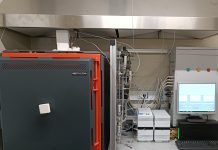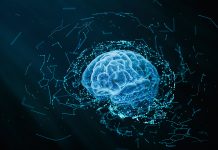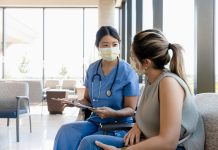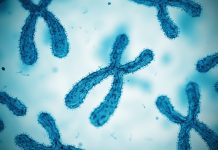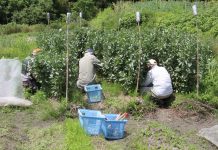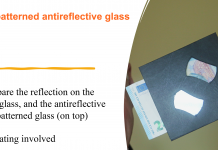Open Access Government produces compelling and informative news, publications, eBooks, and academic research articles for the public and private sector looking at health, diseases & conditions, workplace, research & innovation, digital transformation, government policy, environment, agriculture, energy, transport and more.
Home 2023
Archives
Using of opioids for chronic pain: Controversies, guidelines, research needs
First in a series of five articles, Norm Buckley and Jason Busse explore the trials and tribulations associated with using opioids for chronic pain, particularly in Canada.
Understanding catalytic methane decomposition: a swift and cost-effective energy decarbonization pathway
Professor Adélio Mendes from the University of Porto – Faculty of Engineering coordinates the Horizon-funded project “112CO2 – Low temperature catalytic methane decomposition for COx-free hydrogen production”.
How can the health sector support Canada’s net-zero ambition?
Fiona A. Miller, Professor & Director at the Centre for Sustainable Health Systems, University of Toronto in Canada, explores how the health sector supports Canada’s net-zero ambition.
Gulf Watch Alaska: Long-term research and monitoring in the Gulf of Alaska
Within the Gulf of Alaska, in the North Pacific Ocean, three major events - both natural and human-caused – resulted in large-scale ecosystem changes during the last 50 years.
The role of religion in offender rehabilitation and prisoner well-being
Sung Joon Jang and Byron R. Johnson discuss the influence of religion on offender rehabilitation and how it promotes prisoner well-being.
Neuronal networks of depression: Pushing the limits of brain stimulation technology
A team of researchers at the University of Freiburg and Delft University of Technology have joined forces to explore a new focused ultrasound technology to tap into the Neuronal Networks of Depression.
Acute care hospital reform in Japan: Outcomes in quality and market competition
This paper describes why the fee system for acute care hospital reform in Japan is beginning to show results.
The potential of microparticles for active surveillance of infectious diseases
Emmanuel Kifaro from the SACIDS Foundation for One Health, and College of Veterinary Medicine and Biomedical Sciences, Sokoine University of Agriculture, Tanzania, details the potential application of microparticles for active surveillance of viral infections from non-invasive animal matrices.
The link between gene expression and machine learning
Professor Y-h. Taguchi uses tensor decomposition to identify genes associated with altered gene expression caused by drug treatment.
Exploring digital twins and structural vibration in collaborative research
Claus H. Ibsen, PhD, the Group R&D Director at Vestas aircoil A/S, and Professor Atul Bhaskar from the University of Southampton (currently at the University of Sheffield) discuss their collaboration and funding in their Horizon Europe project on structural vibration.
Ethnography and cinema as meditation tools in gang research
In this article, Carles Feixa and José Sánchez-García share two main results of the Special Features of the TRANSGANG project: White Paper and Documentary films which looks at mediation tools in gang research.
Sustainable production of pheromones now a reality
When the PHERA Project started, it was with an ambitious goal to prove that insect pheromones can be produced using a biological rather than a chemical process.
Exploring hexacorallian models to aid corals affected by climate change
In this interview, Benyamin Rosental, PhD, from the Shraga Segal Department of Microbiology, Immunology, and Genetics, looks toward hexacorallian models to transplant stem cells to corals affected by global warming.
Genetic coding: Roots of genetic readout in nucleic acid structural duality
Charles W. Carter, Jr, from the Department of Biochemistry and Biophysics, University of North Carolina at Chapel Hill explores the roots of genetic readout in the inherent structural duality of DNA and how genetic coding expanded its potential, enabling life to emerge.
Revolutionary pain relief cream and two-minute exercise to cure and prevent lower back pain
Dr Helene Bertrand has specialised in pain treatment after suffering from ongoing lower back pain for 37 years. Here in conversation with Open Access Government, Helene explores her lower back pain journey and the ways she has found to heal herself.
The IDEA Model: A best practice for data-driven strategic risk and crisis communication
Professors of Strategic Communication Dr. Deanna D. Sellnow and Dr. Timothy L. Sellnow explore strategic risk and crisis communication using the IDEA Model, a theoretically grounded tool for effective communication.
EAT2beNICE Project: The correlation between diet and mental health
Jeanette C. Mostert & Alejandro Arias Vasquez from the Departments of Genetics and Psychiatry, Radboud University Medical Center Nijmegen, The Netherlands, reveal that diet and mental health are linked, as they reflect on the lessons learned from the Eat2beNICE project.
RNA molecule signature diagnosis could revolutionize personalized medicine
Professor Michael Levin from Imperial College London argues that in the DIAMONDS project, there has been a breakthrough response in personalized medicine via RNA molecular signature diagnosis.
Exploring the partnership between the agriculture and social welfare sectors
The intrinsic value of the partnership between agriculture and social welfare sectors can help us to enrich the way that we work, and how we think about work.
Nanotexured surfaces could be transformative – If given a chance to flourish
Professor Parvaneh Mokarian, founder of the technology and SUN-PILOT coordinator from Trinity College Dublin and AMBER centre looks at the possibilities and applications of nanotextured surfaces.


